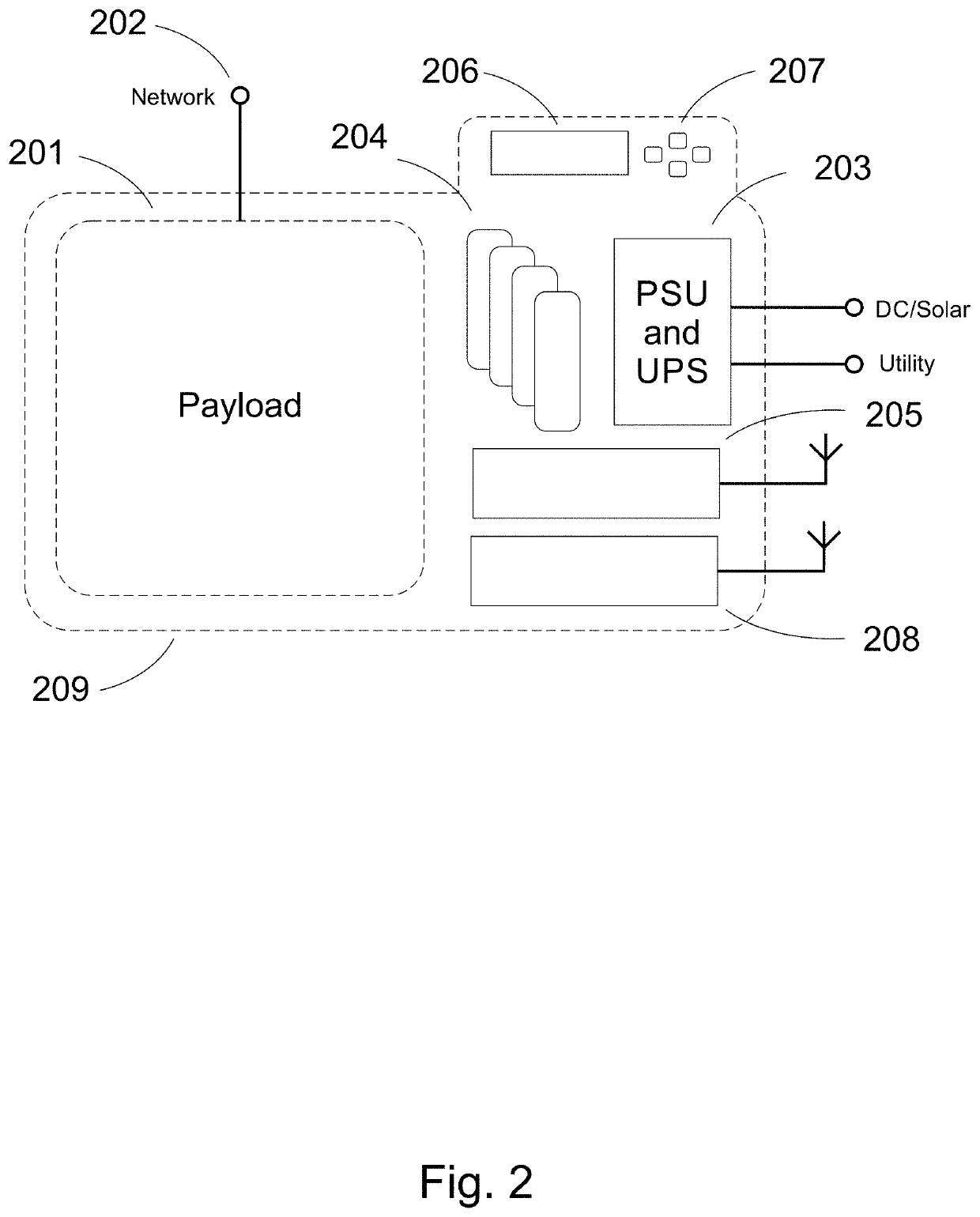Edge computing deployment and management
a technology of edge computing and deployment, applied in the direction of individual entry/exit registers, electrical appliances, instruments, etc., can solve the problems of data center inability to guarantee acceptable transfer rates and response times, devices at the edge constantly consume data, and push network bandwidth requirements to the limit, so as to minimize capex and opex, maintenance and support, the effect of minimizing costs
- Summary
- Abstract
- Description
- Claims
- Application Information
AI Technical Summary
Benefits of technology
Problems solved by technology
Method used
Image
Examples
Embodiment Construction
[0034]The word “exemplary” is used herein to mean “serving as an example, instance, or illustration.” Any embodiment described herein as “exemplary” is not necessarily to be construed as preferred or advantageous over other embodiments. It is to be understood that the terminology used herein is for purposes of describing particular embodiments only and is not intended to be limiting. The defined terms are in addition to the technical and scientific meanings of the defined terms as commonly understood and accepted in the technical field of the present teachings.
[0035]As used in the specification and appended claims, the terms “a”, “an” and “the” include both singular and plural referents, unless the context clearly dictates otherwise. Thus, for example, “a system” or “a device” includes one system or device as well as plural systems or devices.
[0036]The present disclosure relates to a modular and portable system architecture which enables Edge Cloud physical infrastructure building b...
PUM
 Login to View More
Login to View More Abstract
Description
Claims
Application Information
 Login to View More
Login to View More - R&D
- Intellectual Property
- Life Sciences
- Materials
- Tech Scout
- Unparalleled Data Quality
- Higher Quality Content
- 60% Fewer Hallucinations
Browse by: Latest US Patents, China's latest patents, Technical Efficacy Thesaurus, Application Domain, Technology Topic, Popular Technical Reports.
© 2025 PatSnap. All rights reserved.Legal|Privacy policy|Modern Slavery Act Transparency Statement|Sitemap|About US| Contact US: help@patsnap.com



